6 Exercises To Relieve The Annoying And Painful Symptoms Of Plantar Fasciitis
Plantar fasciitis usually appears when we are overweight or when we do some undue effort. To prevent it we can practice a series of stretches and specific exercises.
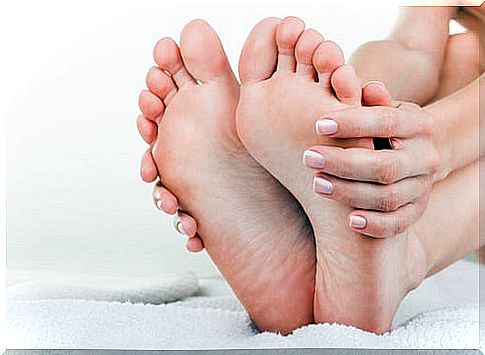
According to information obtained from the US National Library of Medicine, plantar fasciitis is one of the leading causes of heel pain. It occurs when the strong band of tissue that supports the arch of the foot becomes irritated or inflamed.
Every year, a sector of the population has to be treated for plantar fasciitis. Some of them have to undergo different therapies in order to recover.
This problem causes intense pain in the heel, which invites you to limp once you try to take steps. Although, it can extend towards the edge of the feet.
The most normal thing is that the intensity of the pain decreases or disappears after walking for a few minutes or exercising the affected limb.
According to this study from the General Hospital of Nuestra Señora Del Prado (Talavera de la Reina), this condition occurs with a higher proportion after 40 years of age. It is more common in women than in men.
What is the plantar fascia?
The plantar fascia is a long, thin ligature that is located under the skin at the base of the foot. It is a tissue similar to a tendon. It connects to each of the bones that make up the pad of the foot.
Ligation connects the heel to the front. It supports the arch so that it can make efforts by having to resist the weight of the body in each movement.
However, when there is too much pressure, either from being overweight or also from undue strain, tissues are damaged and torn. This results in severe pain, the result of inflammation and stiffness of the heel. This pain is better known as plantar fasciitis.
Risk factors for plantar fasciitis
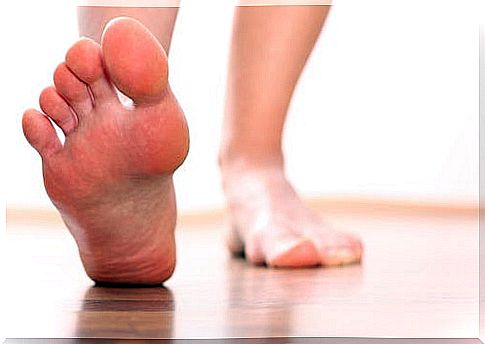
So far the researchers of this ailment have not been able to identify a specific cause that explains the problem.
However, there are different factors that can increase the risk of suffering from this condition:
- Tense calf muscles. Since it will hinder the flexion of the foot and will pull the toes closer to the tibia. In fact, in rehabilitation, calf exercises must also be performed, according to this study carried out by the University of Guanajuato (Mexico).
- Being overweight or obese. This is stated in this information from the Spanish Society of Internal Medicine.
- Have a very pronounced arch.
- Carry out a repetitive impact activity (running or certain sports), as stated in this study carried out by the University of Barcelona.
- Start a new or more intense activity than usual.
Symptoms of plantar fasciitis
Pain is the general symptom of this condition. However, the following details can be taken into account:
- Feel pain in the base of the foot near the heel.
- Feeling pain when taking the first steps after getting out of bed in the morning, or also after a long period of rest.
- Severe pain after exercise or other activity that involves movement.
Exercises to Relieve Plantar Fasciitis Symptoms
Exercise is one of the best therapies to reduce and prevent the annoying symptoms of plantar fasciitis. Especially when they are usually recurrent.
Therefore, there are some easy stretches to perform. They are carried out to strengthen the foot, according to this research carried out by the General Teaching Hospital “Abel Santamaría Cuadrado” (Cuba) and combat this problem.
Exercise 1
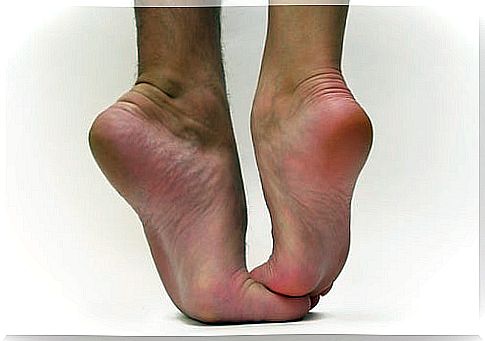
- Find a straight step or platform.
- Stand at the end with the ball of your foot firm and your heels slightly elevated.
- Lower your heel carefully without bending your knees, letting your toes rise naturally.
- Tense your foot for 30 seconds and return to the starting position.
- Perform 10 repetitions of the exercise 3 times a day.
Exercise 2
- Support yourself with your hands on a wall.
- Stretch your arms and make sure one of your legs is straight back.
- The other should be stretched forward.
- Without taking your heels off the ground, slide your body forward.
- Tense it for 30 seconds to feel the stretch.
- Perform 10 repetitions 3 times a day.
Exercise 3
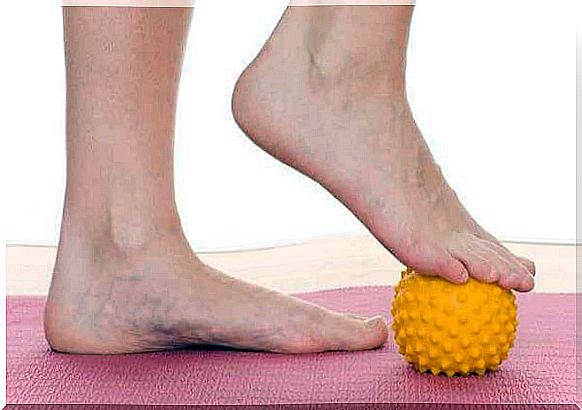
- Using a cold can or golf ball, apply pressure to it using the sole of your foot.
- Start rolling it to relax your foot.
- Perform 30 to 50 repetitions to release the sole of your foot from tension.
Exercise 4
- Stretch the sole of the foot as much as you can.
- Using your hand, bend back your toes, especially your thumb.
- Do the exercise with your knee bent first, then stretch it out.
- Try to hold the tension for 30 seconds and do 10 repetitions 3 times a day.
Exercise 5
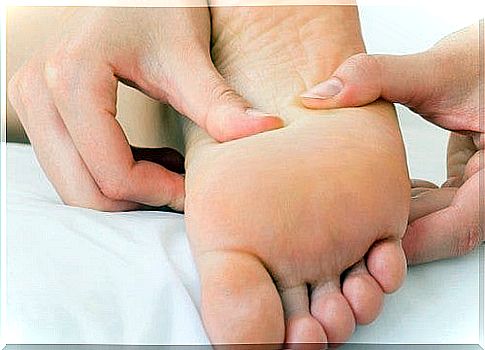
- Stretch the sole of your foot, tensing your toes.
- With your fingertips, apply light pressure across the plantar fascia.
- Stretch it in circular motions.
- Perform the massage for a few minutes, until you feel the sole of the foot relax.
Exercise 6
- Spread a towel on the floor.
- Then try to wrinkle it with your toes.
- Hold the tension for 30 seconds and stretch your feet in a gentle motion to relax them.
- Complete 10 repetitions and do it 3 times a day.
Pain in this area can appear at any time. Therefore, do not hesitate to perform these practical exercises and get rid of this discomfort.
However, if the pain persists, you should visit a specialist as it may be a tear in the ligament.









